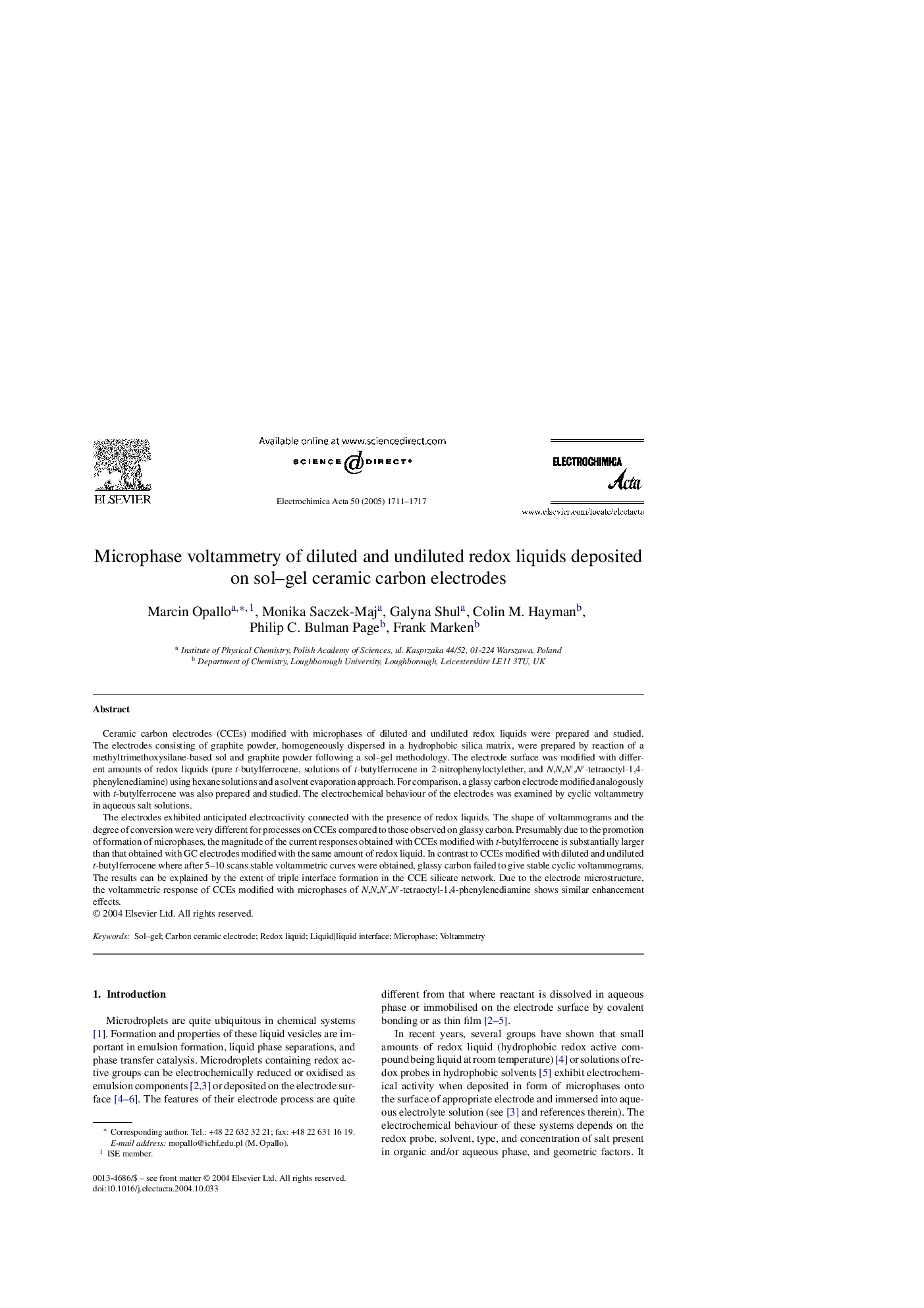| Article ID | Journal | Published Year | Pages | File Type |
|---|---|---|---|---|
| 9625627 | Electrochimica Acta | 2005 | 7 Pages |
Abstract
The electrodes exhibited anticipated electroactivity connected with the presence of redox liquids. The shape of voltammograms and the degree of conversion were very different for processes on CCEs compared to those observed on glassy carbon. Presumably due to the promotion of formation of microphases, the magnitude of the current responses obtained with CCEs modified with t-butylferrocene is substantially larger than that obtained with GC electrodes modified with the same amount of redox liquid. In contrast to CCEs modified with diluted and undiluted t-butylferrocene where after 5-10 scans stable voltammetric curves were obtained, glassy carbon failed to give stable cyclic voltammograms. The results can be explained by the extent of triple interface formation in the CCE silicate network. Due to the electrode microstructure, the voltammetric response of CCEs modified with microphases of N,N,Nâ²,Nâ²-tetraoctyl-1,4-phenylenediamine shows similar enhancement effects.
Related Topics
Physical Sciences and Engineering
Chemical Engineering
Chemical Engineering (General)
Authors
Marcin Opallo, Monika Saczek-Maj, Galyna Shul, Colin M. Hayman, Philip C. Bulman Page, Frank Marken,
